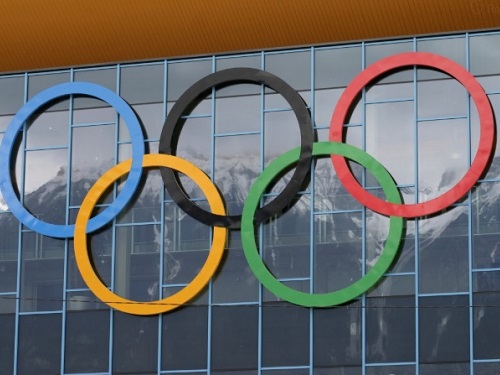- Marketing Mix Strategy ›
- Services ›
- Olympics Marketing Mix (4Ps) & Marketing Strategy
Olympics Marketing Mix (4Ps) & Marketing Strategy
Marketing strategy of Olympics through marketing mix framework which covers the 4Ps (Product, Price, Place, Promotion).
Olympics Product Strategy:
Olympics is an international sporting event which happens every 4 years and has a variety of sports. The Summer Olympics include Archery, Artistic swimming, Athletics, Badminton, Baseball, Basketball, Basque pelota, Boxing, Canoeing, Cricket, Croquet, Cycling, Diving, Equestrian, Fencing, Field Hockey, Football, Golf, Gymnastics, Handball, Jeu de paume, Judo, Karate, Lacrosse and Modern pentathlon. The Winter Olympics include sports practised on ice and snow – Alpine Skiing, Cross-country skiing, Figure skating, Ice Hockey, Luge, Snowboarding, Speed skating etc. They are hosted in various continents with the 2020 Summer Olympics to be held in Tokyo and 2022 Winter Olympics to be held in Beijing.

Image: pxhere
This concludes the product strategy in Olympics marketing mix & strategy.
Olympics Price/Pricing Strategy:
Below is the pricing strategy in Olympics marketing mix strategy:
Olympics’ main source of revenues are broadcasting rights, sponsorships and advertising. A differential pricing strategy is followed where the tickets are priced according to the sports a viewer wants to attend and which seating section he opts for.
The opening ceremony itself costs $400 but a front row seat can go as high as $6000. So, there is this high and low-price points for opening as well as closing ceremony. But they have a pricing policy where the tickets are affordable and accessible. A Pay-Your-Age-Pricing plan has been devised where youngsters who are 16 years or under can pay their age in pounds. People who are above 60 years of age are provided discounted price. Schoolchildren are provided tickets as per the Ticketshare scheme. Olympics do not follow bundling of tickets or free tickets policy.
Olympics Place & Distribution Strategy:
Following is the distribution strategy in the Olympics marketing mix:
Olympics are held at various nations. Till now it has been hosted by 44 cities in 23 countries. The United States hosted the greatest number of Summer as well as Winter Olympics.
They are televised and streamed online worldwide.
Olympics Promotion & Advertising Strategy:
The promotional and advertising strategy in the Olympics marketing mix is as follows:
Olympics are one of the most popular global media events. Various broadcasting companies compete for the rights to broadcast it. Numerous companies like Nike, Adidas, Puma provide the sportsmen with new equipment and clothes to improve their performance and advertise their products in the Olympics. The athletes are also paid for appearance in certain outfits. While it looks like the sportspeople and the companies are profitable here, but Olympic Games is equally promoted in return. Recently NBC roped in various social media influencers like The Fine Brothers, Matt Cutshall and alike to produce their own content promoting the Olympic on television. They also advertised on Snapchat during live event streaming. Interviews from leading Olympians and inspirational messages were posted. Kellogg’s started a campaign #getmestarted where it hosted five different Olympians and gave the citizens a chance to see their talents and meet them in person.
Since this is a service marketing brand, here are the other three Ps to make it the 7Ps marketing mix of Olympics.
People:
The volunteers engaged in Olympics demonstrate a powerful effect that can be created on people during the service delivery. They train their staff to prescribed standards and best practices by involving them in accreditations. They engage highly efficient teams who are the reason behind the digital transformation that has been embraced by IOC. The volunteers and staff members are also engaged in the Games. They also hire interns and create innovative induction programs to increase the satisfaction of their employees.
Process:
Olympics create strong associations with their broadcasting partners and maximise exposure across all available media platforms and technologies. The coverage of Olympic Games is made available in increased number of territories and media platforms throughout the world in order to increase the Global Audience Reach.
Physical Evidence:
Olympics’ stadiums, merchandise, website are its biggest physical presence. The organisation highlights various benefits in order to inspire people to become more active. They also promote the economic benefits derived from general physical activity. They increase the sports participation rate which acts as a physical evidence. Hence this completes the marketing mix of Olympics.
About Olympics:
Olympic Games is an athletic festival headed by International Olympic Committee. They are divided into summer and winter sports competitions and are held every 4 years. Olympics happen in a different country every 4 years.
There are two major events i.e. Summer Olympics and Winter Olympics.
This article has been researched & authored by the Content & Research Team which comprises of MBA students, management professionals, and industry experts. It has been reviewed & published by the MBA Skool Team. The content on MBA Skool has been created for educational & academic purpose only.
Browse marketing strategy and 4Ps analysis of more brands similar to Olympics. The Marketing Mix & Strategy section covers 4Ps and 7Ps of more than 800 brands in 2 categories.
Continue Reading:
The names and other brand information used in the Marketing Mix & Strategy section are properties of their respective companies. The companies are not associated with MBA Skool in any way.
What is MBA Skool?About Us
MBA Skool is a Knowledge Resource for Management Students, Aspirants & Professionals.
Business Courses
Quizzes & Skills
Quizzes test your expertise in business and Skill tests evaluate your management traits
Related Content
All Business Sections
Write for Us